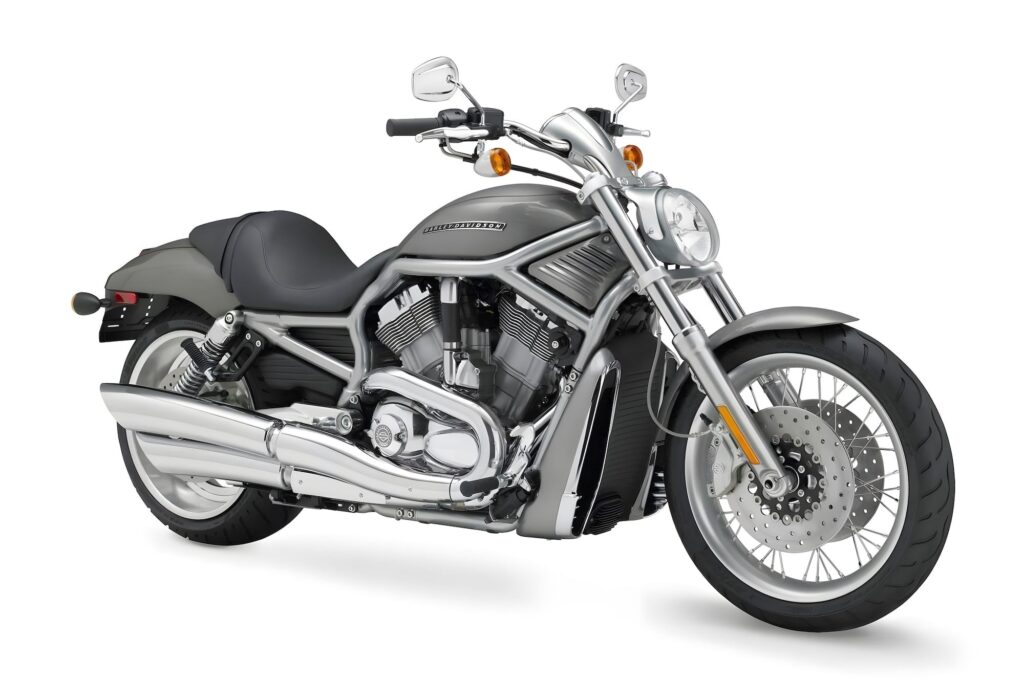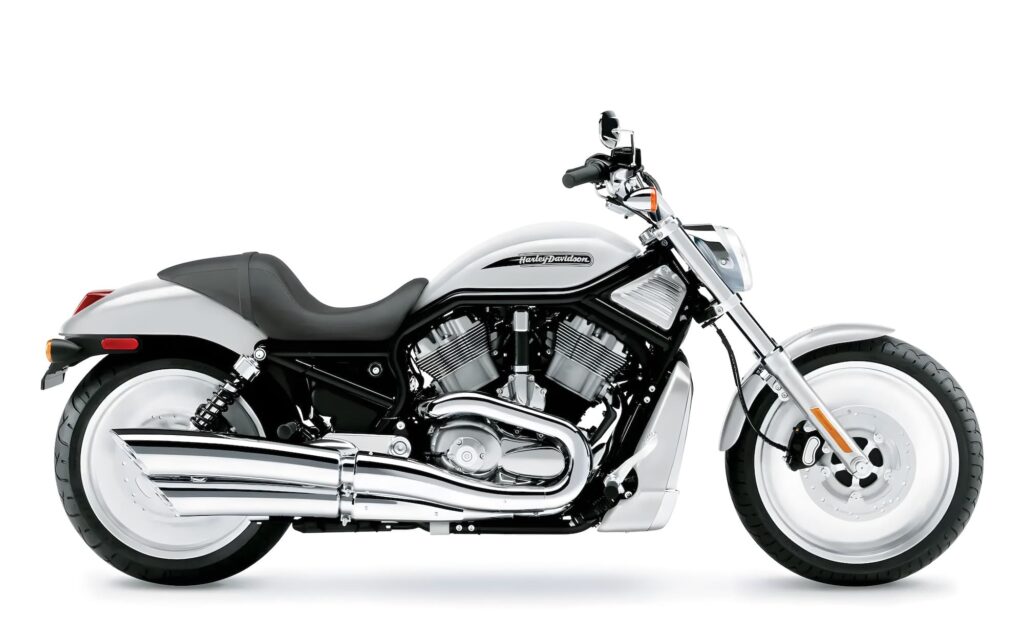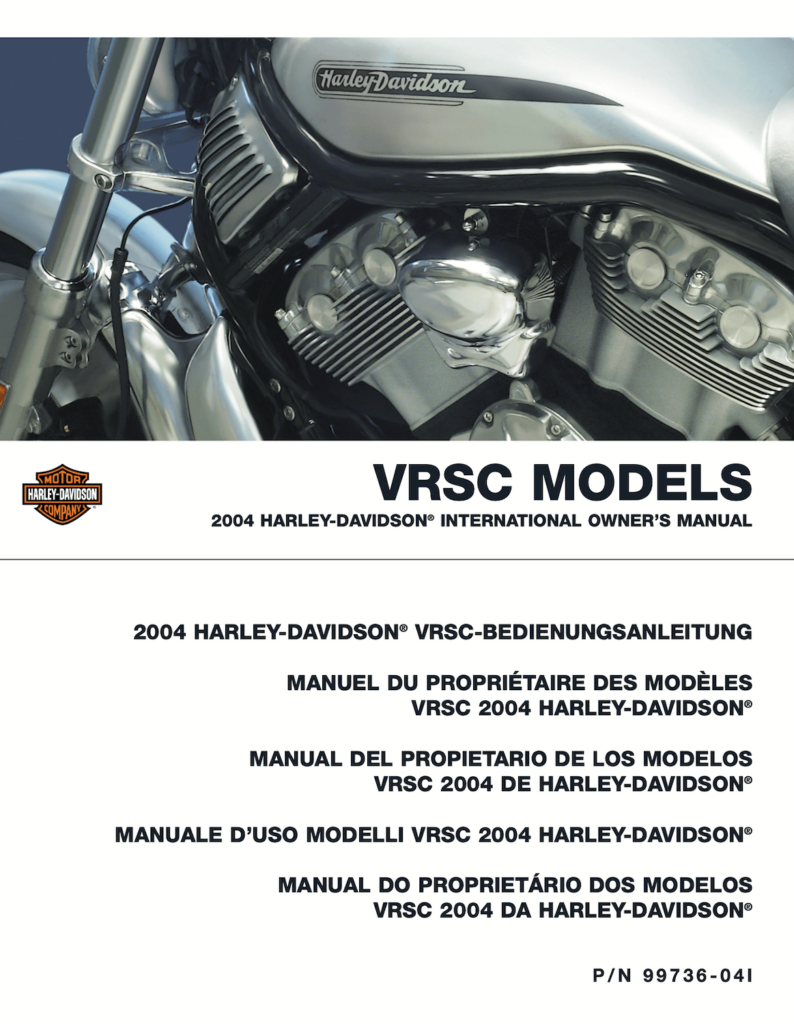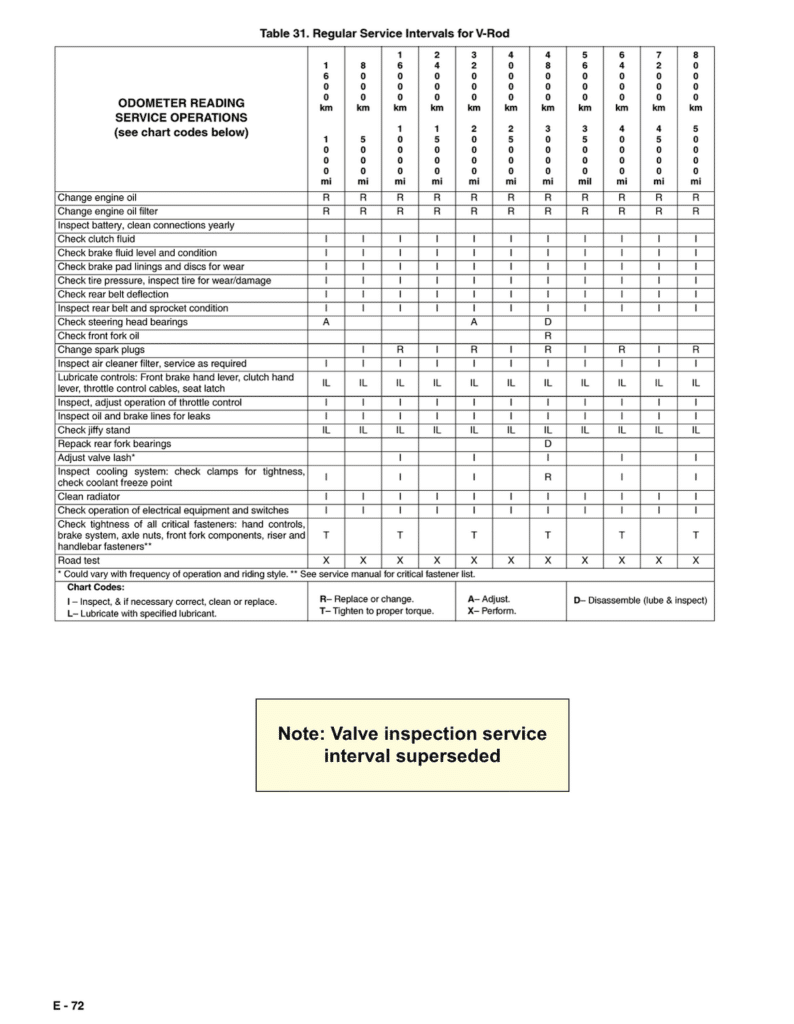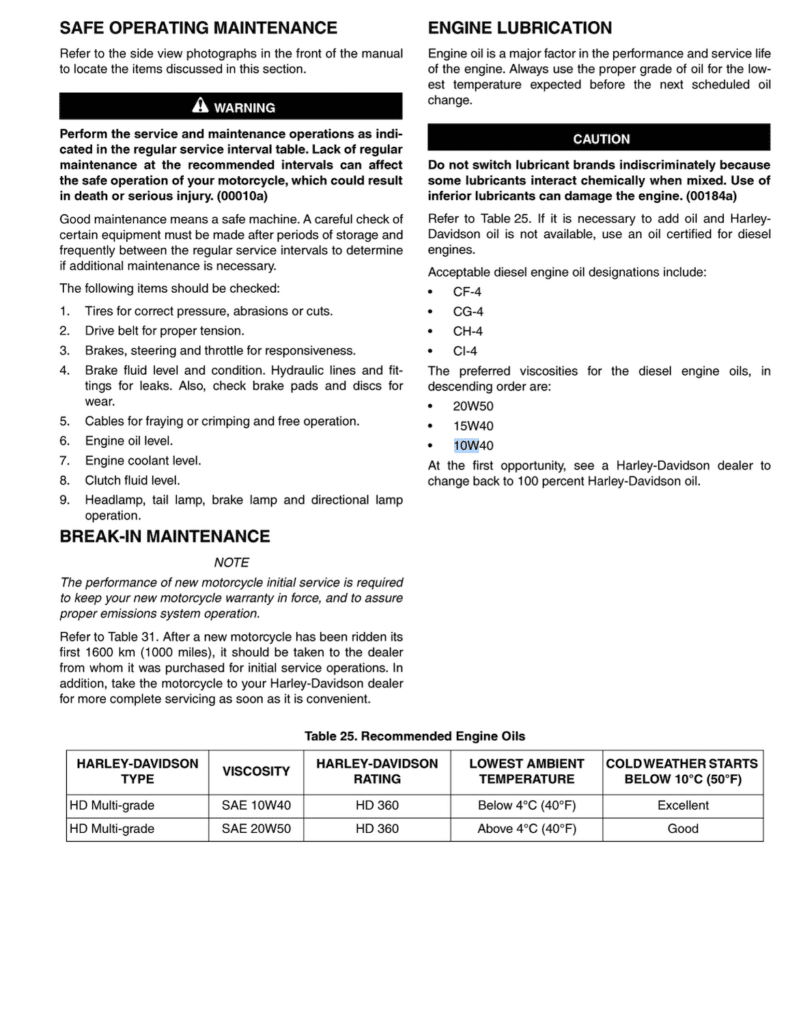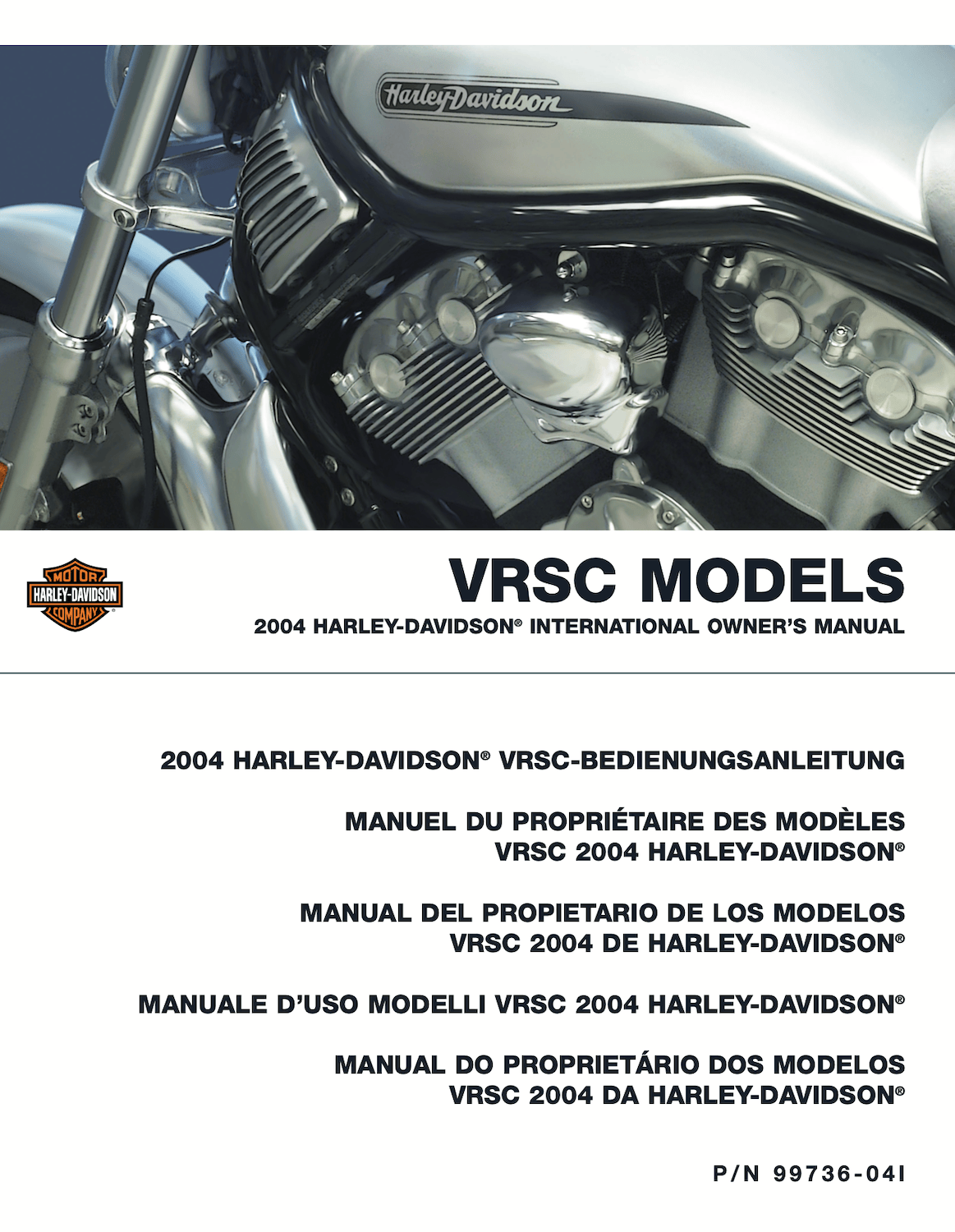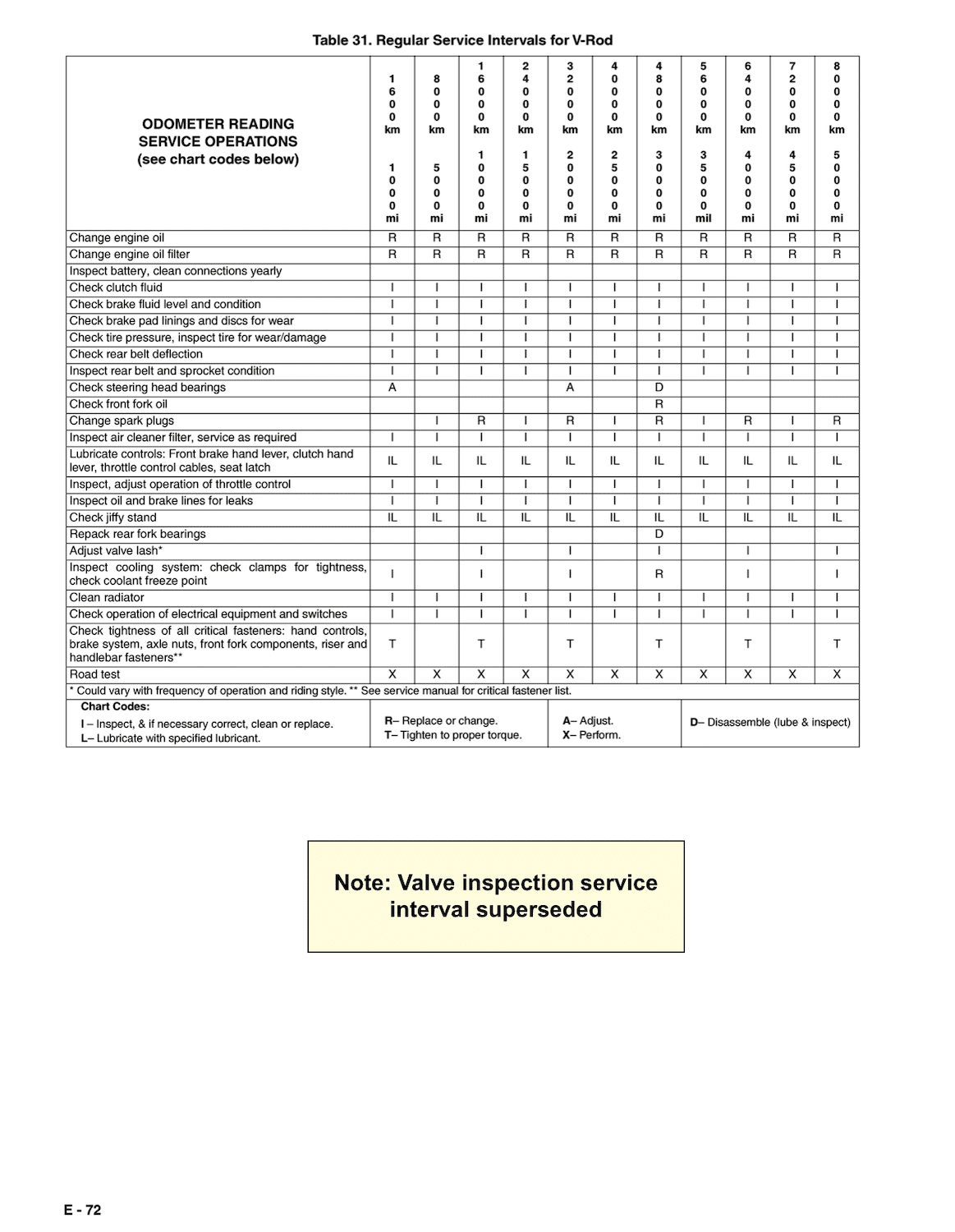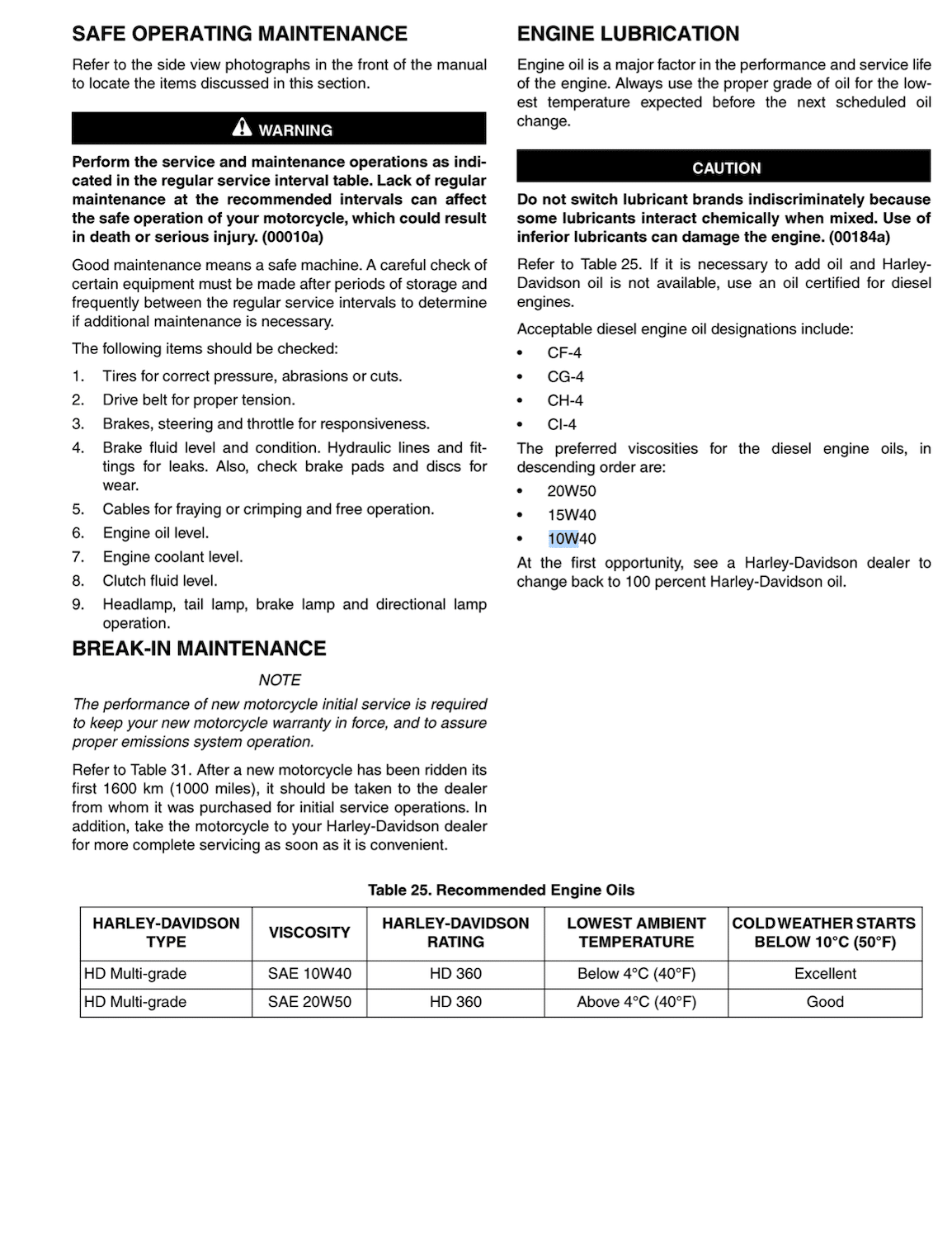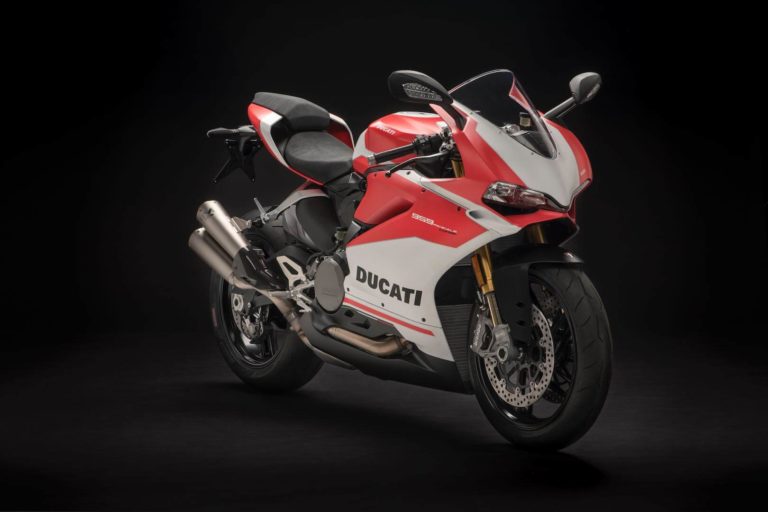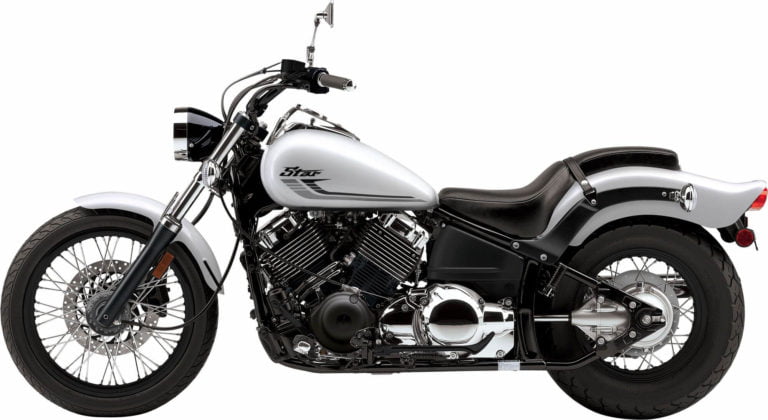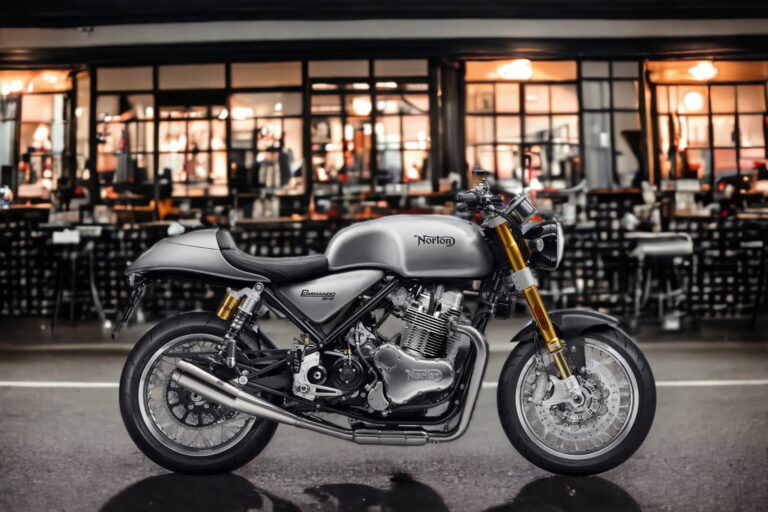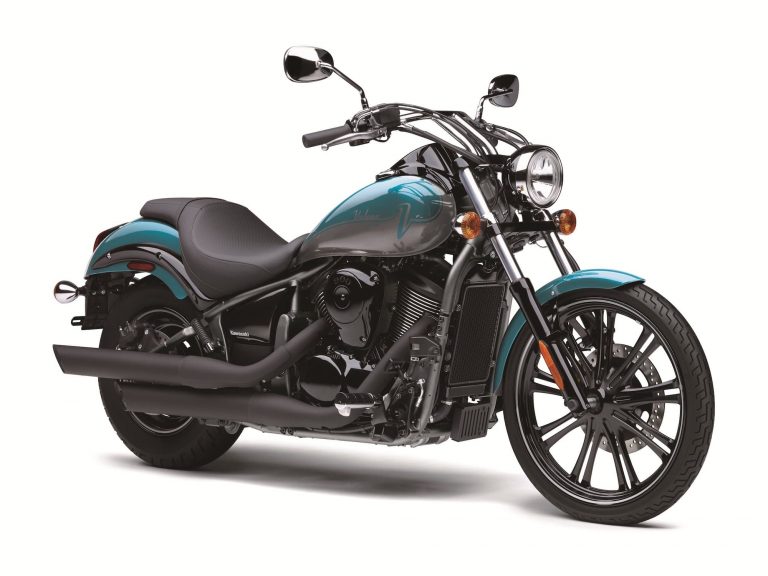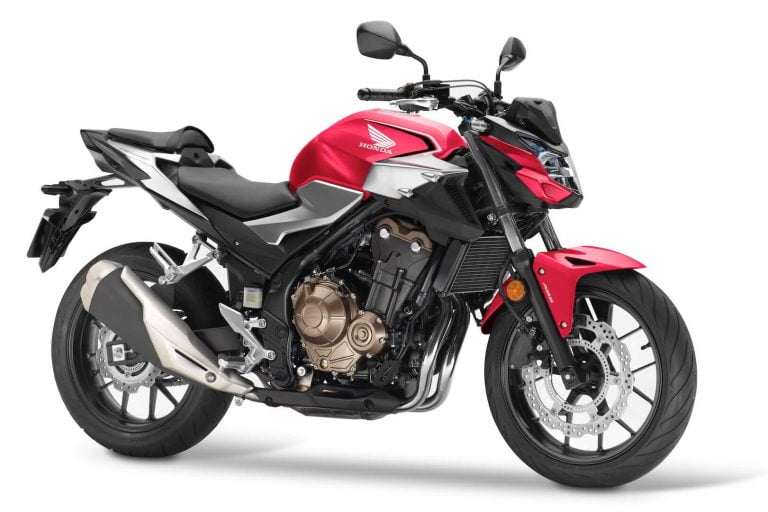Harley-Davidson VRSCA/B V-Rod (2002-2006) Maintenance Schedule and Service Intervals
This is the maintenance schedule and service intervals for the Harley-Davidson VRSCA and VRSCB, the first two motorcycles in the VRSC “V-Rod” range that Harley made between 2002 and 2017.
The VRSCA and VRSCB were the first two of the Harley-Davidson V-Rod line. They’re based on the first-generation Revolution V-twin, a 1131 cc liquid-cooled high-performance engine that revs high and makes decent top0end power — a rarity for Harley-Davidson.
The VRSCA and B have forward foot controls, a 180-profile rear tire (later V-Rods have wider tires), and a conventional fork. The B is basically the same as the A, other than having a blacked-out frame.
This site has links from which we earn a commission (which unfortunately nobody can save, not even us). If you appreciate this research work, then please use those links. Thanks.
Harley-Davidson VRSC Service Intervals
Overall, like most Harley-Davidson motorcycles, the Harley-Davidson VRSCA and VRSCB have 5,000 mile / 8,000 km or annual service intervals.
At every service, change the oil and filter, and look over the motorcycle for items needing lubrication, adjustment, or cleaning. Also check wearable items (like hoses and tires) to see if they’re still in good condition.
Unlike many other Harley-Davidson engines, the VRSCA / VRSCB’s Revolution engine does not have self-adjusting hydraulic valves, and thus has a valve inspection interval. The original manual specified it as 10000 miles, but a service bulletin extended the valve service interval for the 1130 V-Rod motor to 15000 miles, and that’s what’s reflected below.
Whie the belt is low maintenance, you still do need to check it for condition and tension. See below.
A number of items need to be done less frequently, like changing the brake fluid. See the schedule for more details.
Maintenance Schedule
Below is the maintenance schedule for the Harley-Davidson VRSCA / VRSCB V-Rod. It is split into two components:
- The core maintenance schedule of important items to service (e.g. oil changes and spark plugs), and
- The service checklist to do at every scheduled service.
Maintenance schedule
Keep repeating this maintenance schedule in the pattern shown. Follow the earlier of time-based or distance-based service intervals, where appropriate.
| mi x 1000 | 5 | 10 | 15 | 20 | 25 | 30 | |
|---|---|---|---|---|---|---|---|
| km x 1000 | 8 | 16 | 24 | 32 | 40 | 48 | Every |
| Service checklist – Perform | ✓ | ✓ | ✓ | ✓ | ✓ | ✓ | Year |
| Engine oil and filter – Replace | ✓ | ✓ | ✓ | ✓ | ✓ | ✓ | |
| Spark plugs – Inspect | ✓ | ✓ | ✓ | ||||
| Spark plugs – Replace | ✓ | ✓ | ✓ | ||||
| Brake fluid – Replace | 2 years | ||||||
| Front fork oil – Replace | ✓ | ||||||
| Steering head bearings – Adjust – Disassemble, lubricate, and inspect | ✓ | 30K miles (48K km) after first service | |||||
| Rear fork bearings – Repack | ✓ | ||||||
| Valve lash – Inspect, Adjust | ✓ | ✓ | |||||
| Cooling system – Inspect; check clamps for tightness, check coolant freeze point | ✓ | ✓ | |||||
| Coolant – Replace | ✓ | ||||||
| Critical fasteners – Check tightness | ✓ | ✓ | 1 | ||||
| Battery – Check battery and clean connections | Year |
Annual service checklist
Below is the annual service checklist of the VRSCA / B. It’s common to all 1130-engined V-Rod motorcycles.
Note that the VRSCA in 2006 has Brembo brakes. No VRSCB model got Brembo brakes (it was only made in 2004 and 2005).
| Service Checklist — Harley-Davidson V-Rod 1130 |
|---|
| Drive belt and sprockets – Inspect and adjust belt |
| Air cleaner – Inspect, service as required |
| Oil lines and brake system – Inspect for leaks |
| Brake pads and discs – Inspect for wear |
| Brake fluid – Check levels and condition |
| Clutch fluid – Check level and condition |
| Throttle, brake and clutch controls – Check, adjust and lubricate |
| Tires – Check pressure, inspect tread |
| Radiator – Clean |
| Jiffy stand – Inspect and lubricate |
| Electrical equipment and switches – Check operation |
| Road test – Verify component and system functions |
VRSCA / VRSCB V-Rod Belt Tension Adjustment
Like most (but not all) Harley-Davidsons, the V-Rod has a belt final drive. While a belt is lower maintenance than a chain, you still have to check its condition and tension, adjusting tension and changing it if necessary.
At every service, generally check the belt’s condition. Check it for broken or missing teeth, stone damage, or other major damage. Depending on the severity of the damage, you may choose to proceed with caution or to immediately replace the belt.
Follow this procedure to check the VRSCA / VRSCB’s belt tension.
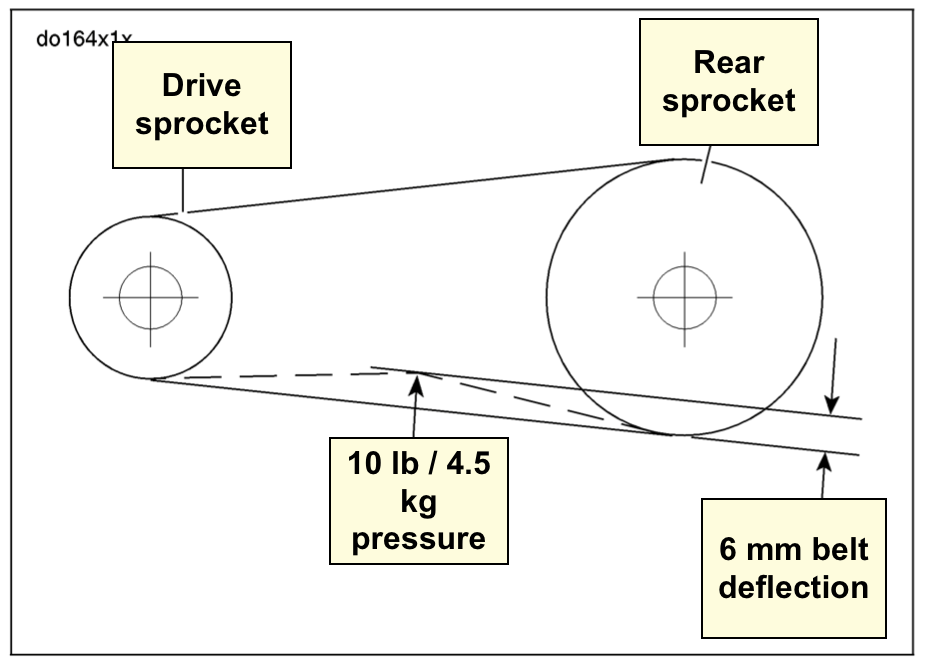
- Put the motorcycle in neutral with the motorcycle upright.
- Use a belt tension tool to push up at the belt deflection measurement window with 4.5 kg / 10 lb of force.
- Measure the number of notches of deflection. Each deflection is 2mm.
Target deflection for the VRSCA / B: 6 mm (other models may have different deflection numbers).
If the belt deflection is out of spec (usually, too loose), you need to adjust it by following the below procedure.
- Remove the clip on the axle and loosen the rear axle. You’ll need a large breaker bar to do this, and may need a special tool, or to remove the muffler.
- Turn the axle adjustment eccentric on the left-hand side until the belt deflects 6 mm.
- Once you’ve reached the correct deflection, tighten the axle to 140-150 lb-ft (190-203 Nm) (Note — This may seem very high, but it’s true — see this discussion on 1130cc.com)
- Install e-clip
- Re-check belt deflection to make sure it hasn’t moved.
Notes on Valve Service for the VRSC Revolution Engines
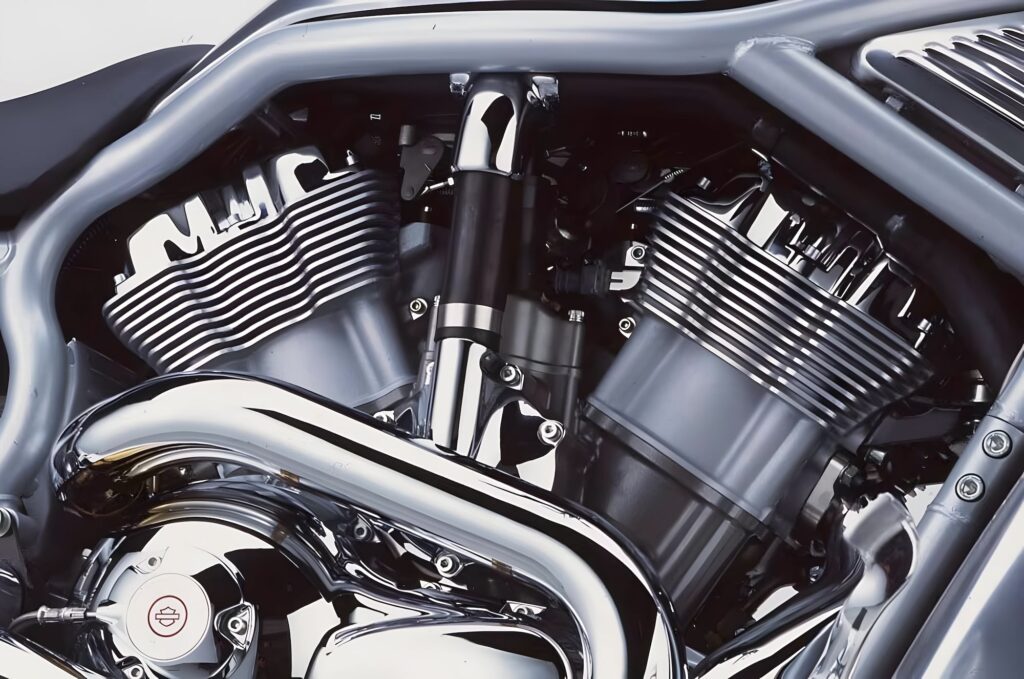
The VRSCA and VRSCB introduced 1131 cc “Revolution” series engine. This engine is of a totally different construction from other Harley-Davidson engines — different from the “Big Twins” and different from the Revolution X motors in the later Street like (e.g. the Street Rod XG750A) or the Revolution Max motor (e.g. in the Sportster S) — though closer to the latter.
The Revolution engine has mechanical valve lifters, not the self-adjusting hydraulic lifters that most air-cooled Harley-Davidsons have (from Sportsters to Tourers). Thus, the valve clearances have to be checked and set — every 15,000 miles or 24,000 km. The Revolution engine has a shim under bucket valve adjustment procedure.
The procedure to adjust the valve lash is roughly as complex as it is on most motorcycles with dual overhead camshafts. First, it greatly improves access to loosen the drive belt, remove or loosen the exhaust, remove some of the engine mounts, and tilt the engine forward.
You have to remove things around the valve covers and remove the valve covers. Some of the fasteners require special tools.
Then, you have to use feeler gauges to check the clearances of the valves. There are four valves per cylinder, so eight clearances to check.
Valve lash specs for the Revolution engine are below:
| Area | Valve lash (mm) | Valve lash (in) |
|---|---|---|
| Intake | 0.195-0.245 mm | 0.0078 – 0.0096 in |
| Exhaust | 0.295-0.345 mm | 0.0117 – 0.0135 in |
If the valve lash on your VRSC is out of spec, you have to then (without losing the timing) remove the cam chain tensioner, roll a camshaft out of the way, and remove the bucket, replacing the shim underneath it.
The valve lash adjustment procedure is delicate and easy to muck up if you accidentally knock off the timing chain or camshaft, so it’s good to have a mechanic you can call to fix the timing if that happens — or to give it to a mechanic to do to begin with.
Wheels, Tires, and Tire Pressures
The VRSCA and VRSCB both have a 19/18 inch front/rear tire combination. They ship with Dunlop D207 tires but many others would suit.
| Wheel | Tire size | Tire pressure (cold) |
|---|---|---|
| Front | 120/70ZR19 60W | 36 psi / 248 kPa |
| Rear | 180/55ZR18 74W | 38-40 psi / 262-276 kPa |
About the Harley-Davidson V-Rod (VRSCA / VRSCB)
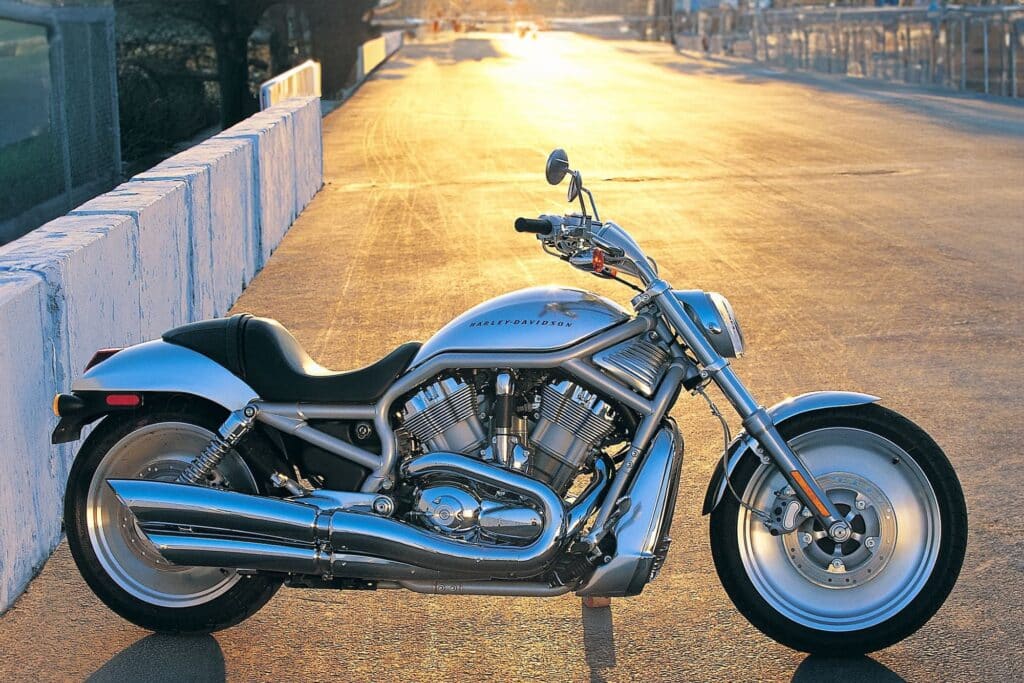
Harley-Davidson launched the V-Rod line with the VRSCA in 2002. Back, then, it was just known as the V-Rod.
The first-gen V-Rod set the stage for all the later V-Rods to come. it has the now-iconic liquid-cooled Revolution V-twin with dual overhead cams and four valves per cylinder — specs shared at the time mostly with superbikes and high-end sport bikes, but not cruisers.
The VRSCA V-Rod is as big on style as it is on performance. It has loads of chrome, shiny engine covers, and space around the engine despite the liquid cooling system (so Harley diehards still have an engine they can see through). There’s also a big ‘ol radiator up front.
The wheels are solid cast rims that are stylish but not exactly lightweight. That, coupled with the big tires on non-inverted forks, means that the VRSCA’s handling isn’t terribly easy.
Speaking of easy, the VRSCA has forward controls and drag bars, which means that you become somewhat of a parasail when riding. It’s fine for short distances and it “feels cool”, but it gets old at high speeds over long rides. (The 2006-2007 VRSCR Street Rod was the first VRSC to have mid controls.)
These days, the VRSCA is over two decades old. This means that many of them have seen a hard life and plenty of modifications. The exhaust is one of the first things to be modded, and a tune doesn’t always go hand in hand with it.
The VRSCA is a power cruiser, so it’s likely to be ridden hard. Even though it has 5,000 mile / 8,000 km or annual service intervals, some riders choose to change the oil more often.
In 2004, Harley-Davidson introduced the VRSCB. It’s the same as the VRSCA, just with a blacked-out frame. This was made only for two years.
Reference — Manual screenshots
The above information came from the owner’s manual for the VRSCA / B (consulting the domestic and international versions) and the service manual for VRSC motorcycles.
Below there are a few screenshots from the manuals for reference — of the maintenance schedule.
You can download these manuals from Harley Davidson here.
